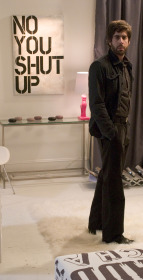The news regarding the Lawrence Salander fraud just keeps getting worse. Today, Manhattan DA Robert Morgenthau’s office arrested the Upper East Side dealer again, and added three new counts to the 100-count indictment handed up last March. Bloomberg has the news.
Morgenthau’s office upped to total of Salander’s thievery from collectors, artists and investors to more than $92 million. Salander-O’Reilly declared bankruptcy in November 2007, as did Salander, his wife, Julie, and his defunct gallery, Salander-O’Reilly, have all declared bankruptcy.
The key sections in Bloomberg’s article:
Manacled and grimacing, the 60-year-old dealer, who at his peak counted hedge-fund managers and tennis star John McEnroe as clients, pleaded not guilty in criminal court this afternoon. Five hours earlier he surrendered to Morgenthau’s office in lower Manhattan.
And:
The new charges add three counts against Salander to the 100-count indictment presented in March — and introduced a new bold-faced name to the criminal case. Morgenthau said Salander and Morse repeatedly sold works by Robert De Niro Sr., a painter who died in 1993, without informing his son, the actor Robert DeNiro, or remitting proceeds.
Morgenthau is quoted as saying: “He was a pretty good spender. I don’t think there’s much chance of getting any money.”





